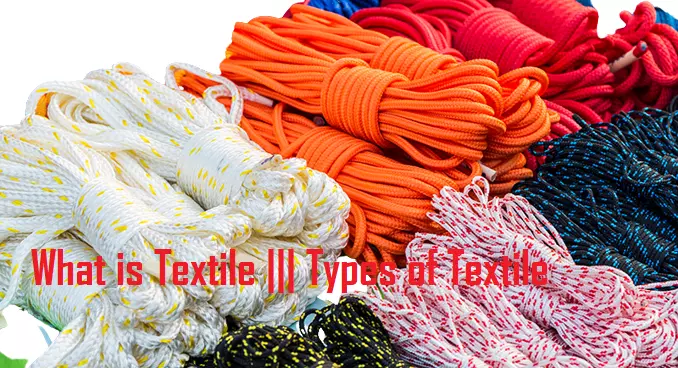What is Textile?
The term ‘Textile” is a Latin word originating from the word ‘texere’ which means ‘to weave’. Textile is fiber, yarn, fabric, dyeing, printing, or clothing in the textile industry; and these things manufacturing processes like spinning, weaving, knitting, etc. Textile design and fashion are also part of the textile. Textiles are classified by fiber types, fabrics types, weaving types, and end-use types. Textile is a flexible material consisting of a network of natural or artificial fibers yarn is produced by spinning raw fibers of wool, flax, cotton, hemp, or other materials to produce long strands of textiles are formed by weaving, knitting, crocheting, knotting, tatting, felting or braiding. In the past all textiles were made from natural fibers including plant animal and mineral sources; in the 20th century, these were supplemented by artificial fibers made from petroleum, etc. Textiles are made in various strengths and degrees of durability the relative thickness of fibers in cloth is measured in denier x’. Textiles have an assortment of uses the most common of which are for clothing and for containers such as bags and baskets in the workplace they are used in industrial and scientific processes such as filtering textiles are used in many traditional crafts such as sewing quilting and embroidery miscellaneous uses include flags backpacks tents nets handkerchiefs cleaning rags transportation devices such as balloons, kites’ sails and parachutes in the household they are used in carpeting upholstered furnishings window.

Types of Textile
Normally the textiles are classified according to the component fibers, for example, we can divide them into fibers that are made of silk, wool, linen, or cotton which are natural and are made up from natural fibers. Similarly, there are textile products that are made from synthetic fibers like rayon, nylon, and polyester, so this is another category of textile which are made of man-made or synthetic fibers. Similarly, they are textiles products that are made from inorganic fiber like cloth of gold glass fiber or asbestos cloth, so based on the type of fiber which we are using we can classify them into different categories either natural made from natural fiber, made from synthetic fiber or some kind of inorganic family, similarly how they are made of actually. We can divide the textiles on the basis of their structure or weaving process that they are weaved or knitted or they are just made composites. So based on their manufacturing process, we can also categorize them, then another factor which can be used to categorize is the value or quality of textiles and they’re actually also depending on various factors one of them is the quality of the raw materials what kind of quality an of the raw material we are using and then another parameter is the vector of the yarn which is one from the fiber. So, whether that yarn is either clean, it is smooth, it is fine or it’s just a coarse. Kind of material also we have to see whether it is twisting this hard for a medium so that actually it determines the quality of the finer a textile product. Similarly, the density of weaving and finishing processes are important elements in determining the quality of fabrics and then actually play a role in categorizing the textile products based on their quality.
